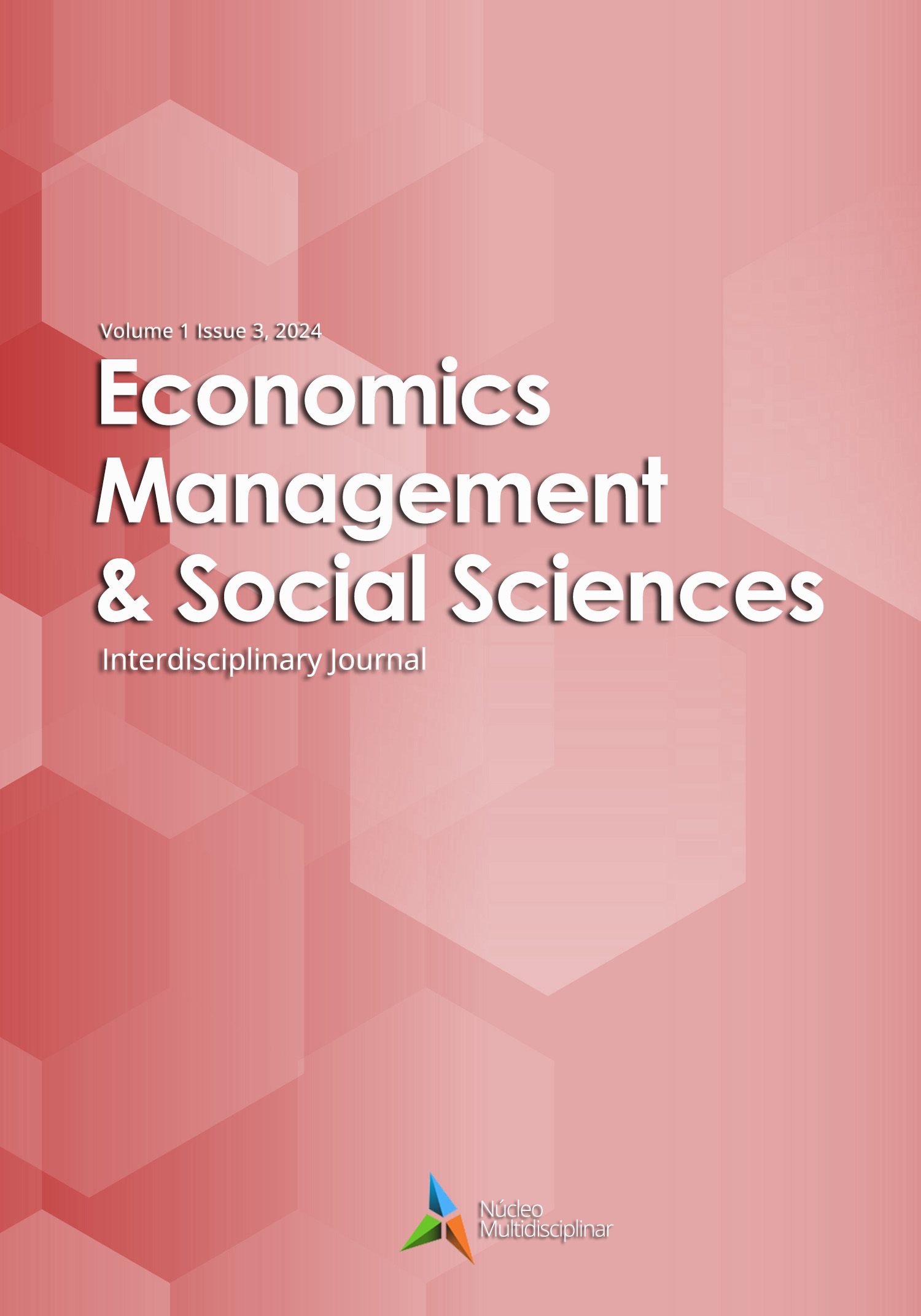Etude sur la logistique collaborative et performance de l’entreprise
Cas de prestataire logistique et donneur d’ordre du secteur automobile au Maroc
DOI :
https://doi.org/10.23882/emss24076Mots-clés :
Logistique collaborative, système d’information logistique (SIL) , prestataire logistique (PL) , donneur d’ordre, performance logistiqueRésumé
Avec les nouvelles exigences des clients et des consommateurs de plus en plus complexes, les entreprises sont obligées de se doter d’un système d’organisation susceptible de répondre à leurs besoins et faire face à ces exigences. Parallèlement, la nécessité de réduire les coûts et de se recentrer sur le cœur du métier se développe continuellement au sein de tous les secteurs industriels. En effet, une nouvelle pratique organisationnelle appelée « la collaboration inter-organisationnelle » est apparue.
Les technologies de l’information et de la communication (TIC) sont aujourd’hui les outils incontournables pour avoir un tel système d’organisation permettant aux entreprises en général et les prestataires logistiques en particulier d’atteindre leurs objectifs. L‘objectif est de faire un croisement de deux notions relevant des sciences des organisations à savoir : la logistique collaborative et la performance logistique. En se focalisant sur les facteurs qui facilitent la collaboration dans la chaine logistique entre prestataire logistique et donneur d’ordre, d‘une part, et d’autre part, l‘impact de cette collaboration sur la performance logistique du donneur d’ordre dans le secteur automobile.
Cet article vise à analyser la pratique logistique collaborative entre prestataires logistiques et donneur d’ordre au Maroc et son impact sur la performance du donneur d’ordre dans le secteur automobile. Notre démarche repose sur une étude empirique, traitant la question centrale suivante : « Comment et dans quelles conditions la collaboration entre prestataire logistique et donneur d’ordre permet-elle d’améliorer la performance logistique des donneurs d’ordre au Maroc ? ».
Références
Arrègle, J. L., & Quélin, B. (2000). L’approche « Resource-Based View» à la croisée des chemins». Filemanagement stratégique des compétences, Paris, Ellipses, 19-54.
Ashenbaum, B., & Maltz, A. (2017). Purchasing-logistics integration and supplier performance: An information-processing view. The International Journal of Logistics Management, 28(2), 379-397.
Barney J.(1991), « Firm resources and sustained competitive advantage ». Journal of Management, 17, p. 99-120.
Barthelemy, J. (2001). The hidden costs of IT outsourcing. MIT Sloan management review, 42(3), 60.
Brulhart, F., & Moncef, B. (2010). L’impact des pratiques de Supply Chain Management sur la performance de l’entreprise. Revue. Finance Contrôle Stratégique., 13(1), 33-66.
Carbone, V., & Meunier, C. (2006). Supply chain management: Portée et limites–l’apport des théories des réseaux. In Conférence Internationale de Management Stratégique, Annecy, Genève (pp. 13-16).
Cheung, G. W., & Wang, C. (2017). Current approaches for assessing convergent and discriminant validity with SEM: Issues and solutions. In Academy of management proceedings (Vol. 2017, No. 1, p. 12706). Briarcliff Manor, NY 10510: Academy of Management.
Christiaanse, E., & Kumar, K. (2000). ICT-enabled coordination of dynamic supply webs. International Journal of Physical Distribution & Logistics Management, 30(3/4), 268-285.
Dierickx, I., & Cool, K. (1989). Asset stock accumulation and sustainability of competitive advantage. Management science, 35(12), 1504-1511.
Dyer, J. H., Singh, H., & Hesterly, W. S. (2018). The relational view revisited: A dynamic perspective on value creation and value capture. Strategic management journal, 39(12), 3140-3162.
Falk, R. F., & Miller, N. B. (1992). A primer for soft modeling. University of Akron Press.
Grets, N. P., & Kasarda, J. D. (1997). Enterprise logistics in the information era. California management review, 39(4), 55-78.
Haq, M., Moazzam, M., Khan, A. S., & Ahmed, W. (2023). The impact of reverse logistics process coordination on third party relationship quality: A moderated mediation model for multichannel retailers in the fashion industry. Journal of Retailing and Consumer Services, 73, 103362.
Hulland, J. (1999). Use of partial least squares (PLS) in strategic management research: A review of four recent studies. Strategic management journal, 20(2), 195-204.
Kitsios, F., Kamariotou, M., Madas, M. A., Fouskas, K., & Manthou, V. (2020). Information systems strategy in SMEs: critical factors of strategic planning in logistics. Kybernetes, 49(4), 1197-1212.
Kmiecik, M. (2022). Logistics coordination based on inventory management and transportation planning by third-party logistics (3PL). Sustainability, 14(13), 8134.
Knoppen, D., Christiaanse, E., & Huysman, M. (2010). Supply chain relationships: Exploring the linkage between inter-organisational adaptation and learning. Journal of purchasing and supply management, 16(3), 195-205.
Lu, Y., & K. (Ram) Ramamurthy. (2011). Understanding the link between information technology capability and organizational agility: An empirical examination. MIS quarterly, 931-954.
Montague, N. R., Fay, R. G., Lobs, J., & Herbst, K. (2022). BECOMING A TRUSTED BUSINESS PARTNER. Strategic Finance, 104(5), 50-56.
Neutzling, D. M., Land, A., Seuring, S., & do Nascimento, L. F. M. (2018). Linking sustainability-oriented innovation to supply chain relationship integration. Journal of cleaner production, 172, 3448-3458.
Paché, G., & Paraponaris, C. (2006). L'entreprise en réseau: approches inter et intra-organisationnelles
Purwanto, A., & Sudargini, Y. (2021). Partial Least Squares Structural Squation Modeling (PLS-SEM) Analysis for Social and Management Research : A Literature Review. Journal of Industrial Engineering & Management Research, 2(4), 114-123. https://doi.org/10.7777/jiemar.v2i4.168
Sarkum, S., Syamsuri, A. R., & Supriadi, S. (2020). The role of multi-actor engagement. Journal of Open Innovation: Technology, Market, and Complexity, 6(4), 176.
Sinkovics, R. R., Kuivalainen, O., & Roath, A. S. (2018). Value co-creation in an outsourcing arrangement between manufacturers and third party logistics providers: resource commitment, innovation and collaboration. Journal of Business & Industrial Marketing, 33(4), 563-573.
Stigler, G. J. (1951). The Division of Labor is Limited by the Extent of the Market. Journal of political economy, 59(3), 185-193.
Stölzle, W. (2018). Beschaffungs-und Logistik-Management: Industrial Relationships. Walter de Gruyter GmbH & Co KG.
Walker, G., & Weber, D. (1984). A transaction cost approach to make-or-buy decisions. Administrative science quarterly, 373-391.
Wang, Q., Huo, B., & Zhao, X. (2020). What makes logistics integration more effective? Governance from contractual and relational perspectives. Journal of Business Logistics, 41(3), 259-281.
Williamson O.E. (1975), «Markets and Hierarchies: Analysis and Antitrust Implications, Free Press», New Jork.
Williamson, O. E. (1985). «Asset specificity and economic organization». International Journal of Industrial Organization, 3(4), 365-378.
Zafary, F. (2020). Implementation of business intelligence considering the role of information systems integration and enterprise resource planning. Journal of intelligence studies in business, 1(1).
Zawawi, N. F. B. M., Wahab, S. A., Al Mamun, A., Ahmad, G. B., & Fazal, S. A. (2017). Logistics capability, information technology, and innovation capability of logistics service providers: empirical evidence from east coast Malaysia. International Review of Management and Marketing, 7(1), 326-336.
Zou, S., Taylor, C. R., & Osland, G. E. (1998). The EXPERF scale: a cross-national generalized export performance measure. Journal of international Marketing, 6(3), 37-58.
Téléchargements
Publiée
Comment citer
Numéro
Rubrique
Licence
(c) Tous droits réservés Majda Gourire 2024

Ce travail est disponible sous licence Creative Commons Attribution - Pas d’Utilisation Commerciale 4.0 International.







